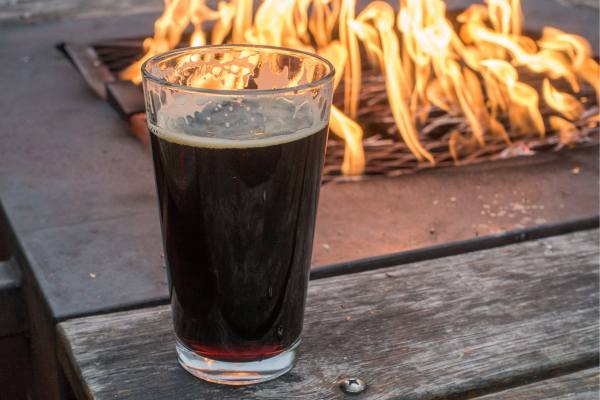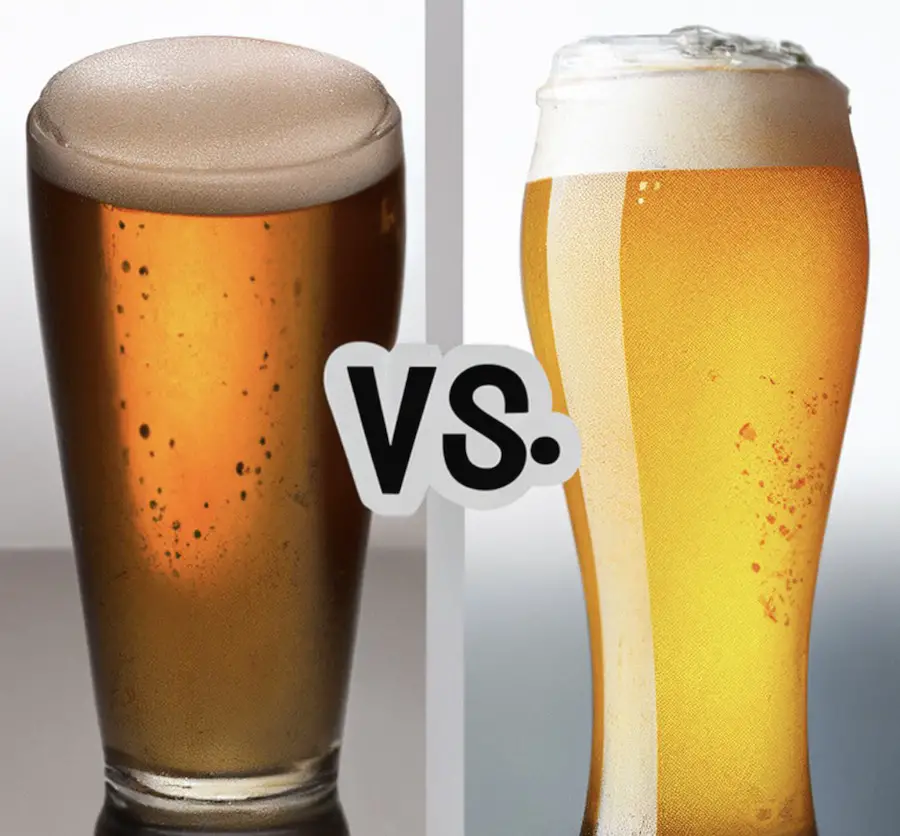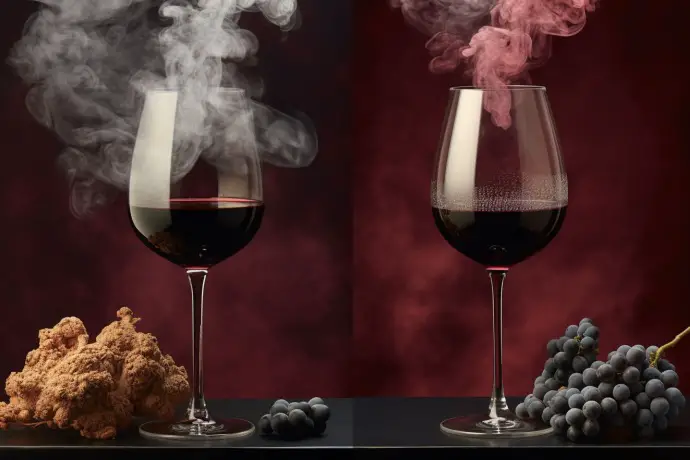As an avid homebrewer and beer enthusiast, I have had countless conversations with friends and fellow beer lovers about the differences between various beer styles. One question that frequently comes up is: What is the difference between a pale ale and other ales?
In this blog post, I will dive into the world of ales and explore the unique characteristics that set pale ales apart from their counterparts.
The main difference between a pale ale and other ales is the color, malt profile, and hop character. Pale ales are generally lighter in color, have a balanced malt-to-hop ratio, and feature more pronounced hop flavors and aromas compared to other ales.
What is an Ale?
Before diving into the specifics of pale ales and how they differ from other ales, let’s first establish the basics of what an ale is.

Ales are a type of beer made using top-fermenting yeast, which ferments at warmer temperatures and produces a wide range of flavors, including fruity esters, spicy phenols, and higher alcohols.
Common Ale Styles
There is a vast array of ale styles, each with its unique flavor profile, color, and character. Some common ale styles include:
1. Pale Ale
2. India Pale Ale (IPA)
3. Brown Ale
4. Porter
5. Stout
6. Belgian Ale
7. Barleywine
8. Saison
The History of Pale Ales
The term “pale ale” originated in the early 18th century in England, where brewers began using a new type of malt called “pale malt.” This malt was kilned at a lower temperature than traditional brown malt, resulting in a lighter-colored beer. The use of pale malt, along with the addition of more hops for preservation, gave birth to the pale ale style.
Color and Appearance
One of the most apparent differences between a pale ale and other ales is the color. Pale ales have a lighter color, typically ranging from gold to light amber.

This lighter color results from the use of pale malt, which imparts less color to the beer compared to darker malts used in other ales.
In contrast, other ales can range from amber and brown to deep black, depending on the types of malt used in the brewing process.
Malt Profile
The malt profile of a pale ale is generally balanced and moderate, with a focus on the pale malt mentioned earlier. Pale malt contributes a subtle sweetness and biscuity character to the beer, without overpowering the hop flavors and aromas. While some pale ales may include small amounts of specialty malts to add complexity, the malt profile remains relatively simple and clean.
Other ales may have a more complex malt profile, with the use of various specialty malts to create flavors such as caramel, chocolate, coffee, and roasted notes.
Hop Character
Pale ales are known for their pronounced hop character, which distinguishes them from other ales. The hop flavors and aromas in a pale ale can range from floral and earthy to citrus and pine, depending on the hop varieties used. The bitterness level in pale ales is typically moderate, providing balance to the malt sweetness without being overly aggressive.
In comparison, other ales may have a more subdued hop presence or focus on different hop characteristics, such as herbal, spicy, or woody notes.
Yeast and Fermentation
While the yeast and fermentation characteristics of a pale ale may not be as distinct as those of other ales, they still play a role in defining the style. Pale ales are generally fermented with clean, neutral ale yeast strains that allow the malt and hop flavors to shine through without contributing significant fruity or spicy esters.
Other ales may be fermented with yeast strains that produce more noticeable esters and phenols, resulting in fruity, spicy, or even funky flavors and aromas.
Alcohol Content
Pale ales typically have a moderate alcohol content, ranging from around 4% to 6% ABV (alcohol by volume). This moderate alcohol level makes pale ales more sessionable, allowing for easier drinking over an extended period.
Other ales can have a wide range of alcohol content, from low-alcohol session beers to high-alcohol, sipping beers like barleywines and imperial stouts.
Substyles and Variations
There are several substyles and variations of pale ales, each with its unique characteristics. Some of these include:
1. English Pale Ale: Also known as “bitter,” this substyle features more earthy and herbal hop character and a more pronounced malt presence.
2. American Pale Ale: This version showcases American hop varieties, with citrus, pine, and tropical fruit flavors and aromas.
3. India Pale Ale (IPA): A stronger, hoppier version of the pale ale, with higher alcohol content and more aggressive hop bitterness.
4. New England IPA: A hazy, juicy variation of the IPA, focusing on hop flavor and aroma with minimal bitterness.
Other ales may also have numerous substyles and variations, often influenced by regional ingredients and brewing traditions.
Food Pairings
Pale ales are versatile when it comes to food pairings, as their balanced flavor profile allows them to complement a wide range of dishes. Some classic pairings include:
1. Burgers and grilled meats
2. Spicy foods, such as curry or Mexican dishes
3. Fried foods, like fish and chips or chicken wings
4. Salads with citrus or vinaigrette dressings
5. Sharp or tangy cheeses
Other ales may have more specific food pairing recommendations, depending on their unique flavor profiles and characteristics.
Conclusion
To recap, the main difference between a pale ale and other ales is the color, malt profile, and hop character. Pale ales are lighter in color, have a balanced malt-to-hop ratio, and feature more pronounced hop flavors and aromas compared to other ales. Here are ten key facts about pale ales and how they differ from other ales:
1. Pale ales are lighter in color due to the use of pale malt.
2. The malt profile of pale ales is more straightforward and clean compared to other ales.
3. Pale ales have a pronounced hop character.
4. The hop flavors and aromas in pale ales can range from floral and earthy to citrus and pine.
5. Pale ales are typically fermented with clean, neutral ale yeast strains.
6. The alcohol content of pale ales is generally moderate, ranging from around 4% to 6% ABV.
7. There are several substyles and variations of pale ales, such as English Pale Ale, American Pale Ale, and India Pale Ale.
8. Pale ales are versatile when it comes to food pairings.
9. Other ales can have more complex malt profiles, subdued hop presence, and higher alcohol content.
10. The unique characteristics of pale ales make them a popular choice among beer enthusiasts and homebrewers alike.
As a brewer and beer lover, I appreciate the nuances that set pale ales apart from other ales. The next time you enjoy a pale ale, take a moment to savor the unique balance of malt and hops that defines this classic beer style. Cheers!
FAQs
What is the difference between real ale and pale ale?
Real ale is a type of beer that is unfiltered and unpasteurized, and is served from a cask without the use of additional carbon dioxide. Pale ale, on the other hand, is a type of beer that is brewed with pale malt and has a distinct hoppy flavor. While real ale can be a pale ale, not all pale ales are real ales.
Is Blue Moon a pale ale?
No, Blue Moon is not a pale ale. It is a Belgian-style witbier.
Is real ale the same as pale ale?
No, real ale and pale ale are not the same thing. Real ale refers to beer that is unpasteurized and naturally carbonated in the cask, while pale ale is a type of beer that is brewed with pale malt and has a distinctive hoppy flavor.
What is considered a pale ale?
A pale ale is a beer style that is characterized by its pale color, moderate to high hop bitterness, and a balanced malt profile. It typically has a moderate alcohol content and can range from light and refreshing to more robust and full-bodied.
What makes an ale a real ale?
A real ale is a beer that is brewed from traditional ingredients, allowed to ferment in the cask or bottle, and served without added carbon dioxide pressure.
What makes an ale a pale ale?
Pale ales are characterized by their use of pale malted barley, which gives them a lighter color and cleaner taste compared to other ales. They also tend to have a moderate to high level of hop bitterness and aroma, which balances out the sweetness from the malt. Overall, the combination of pale malt and hops is what makes an ale a pale ale.




